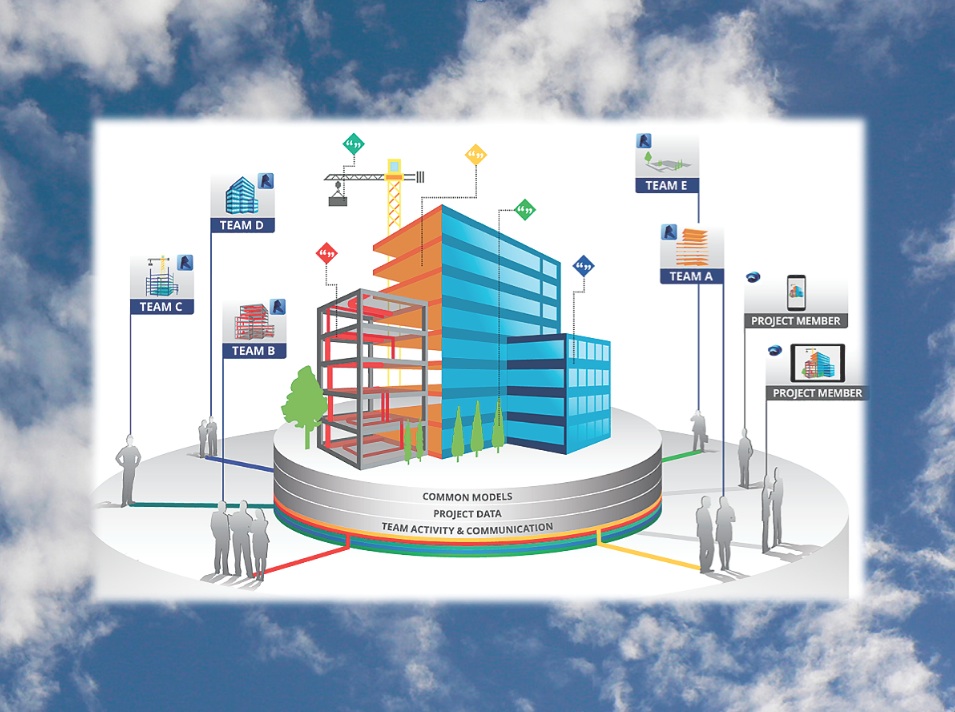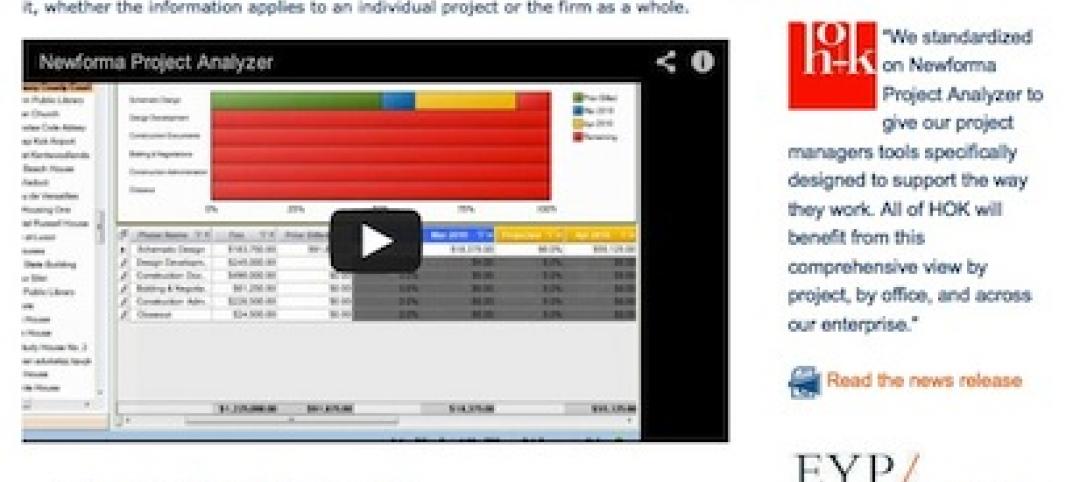The AEC industry has made incredible advancements with parametric modeling during the past 25 years, but the BIM/VDC movement is still relatively in its infancy. Technology gaps, interoperability issues, antiquated project delivery methods, and liability concerns are among the barriers preventing the industry from achieving the full power of BIM/VDC tools on building projects.
A prime example is the promise of true multi-discipline, multi-location, real-time collaboration using a single project model. Sure, the technological capability to do so has been available for several years, but for a host of reasons—from a lack of technical know-how to contractual nitpicks—few Building Teams have taken BIM/VDC coordination to this level. We’re starting to see more Building Teams co-locate for the duration of projects—especially for complex, multi-year projects, like hospitals and government buildings—to improve coordination efforts. But what about virtual co-location?
That’s the promise of “BIM in the cloud,” where project models are hosted virtually to permit multiple project team members in different locations to work on the same model in real time, as if they were in the same room. The major BIM software players—as well as a handful of progressive AEC firms and cloud solution providers, like Citrix, Panzura, and VMWare—have been scrambling the past few years to develop cloud-based BIM solutions. Autodesk, Bentley, Graphisoft, Nemetschek, and Trimble all offer cloud products and services, and encouraging AEC firms to shift to cloud-centric workflows.
“In an ideal world, everyone would be in one office and working off the same network, but that’s just not the reality of how design and construction work today,” says Bjorn Clouten, AIA, Senior Associate/BIM Manager with SRG Partnership. “Cloud-based modeling is critically needed for the industry. It’s something that we’ve been pushing for over the past decade.”
During his 11 years heading SRG’s BIM efforts, Clouten has implemented and experimented with a number of cloud-based modeling approaches, with mixed success. The firm recently beta-tested Autodesk’s newly launched A360 Collaboration for Revit cloud platform for the design coordination of the planned Oregon State Capital Renovation in Salem. The cloud platform allowed a significant portion of the design team, including SRG’s team and designers from the associate architect, structural engineer, MEP engineer, and low-voltage engineer, to coordinate in real time on a single Revit model.
Besides the improved coordination and time savings from not having to exchange models once a week, this technology simplified the process “considerably” by eliminating the need to do workarounds, says SRG’s Clouten. “We have the current information all the time, so we’re not always two weeks behind on the design information.”
5 lessons from moving BIM to the cloud
Like any emerging technology, cloud-based modeling has nuances that can be nettlesome for firms that are new to the process. BD+C asked several early cloud adopters to share their lessons and takeaways. They offered the following:
1. Get ready for a change in workflow. Same model, same users, what’s the difference? For starters, giving multiple users real-time access to the model can lead to logistical problems if the process is not properly managed. “Communication becomes even more critical,” says Seth Spangler, PE, LEED AP BD+C, BEMP, Project Manager with RMF Engineering. “Architects are moving walls and ceilings at the same time engineers are placing diffusers and lights. These same adjustments can have catastrophic effects if the model or families are not configured properly.”
The need for a cohesive BIM execution plan is greater than ever, says Thom Chuparkoff, AIA, LEED AP, Associate with Populous. “The BIM plan should provide a clear understanding of factors like model exchanges, storage, naming conventions, and organization of the model,” he says. “This will allow for a seamless inclusion of models throughout the life of the documentation process.”
2. Communication is more critical than ever. Chuparkoff recommends at least weekly coordination meetings. Depending on what’s being worked on, coordination could involve daily, hourly, or even “real-time” check-ins with multiple team members—as if they were physically co-located.
“Collaboration is synonymous with communication,” says Chuparkoff. “Your new workflow involves a form of partnership with your consultants that is akin to integrated project delivery.”
3. Outsource your cloud infrastructure to avoid added costs and headaches. Sean McDonald, Senior Information Technology Specialist with BIM consultant CASE, has seen a number of firms get into trouble developing their own cloud infrastructure.
“These projects start off the same way: ‘Let’s just buy a server rather than pay all these monthly fees,’” says McDonald. “But there are a number of hidden costs that most firms don’t see until it’s too late.”
Licenses for server software can be “outrageously expensive,” he says, and clouds are labor intensive—“especially if you consider that any down time will potentially prevent your entire firm from working.”
4. Cloud solutions can be IT-intensive. Depending on the approach, the level of IT expertise required for cloud solutions can be extensive. For example, implementing Autodesk’s Revit Server between two firms requires a relatively high level of expertise to be able to enter the IP addresses, configure VPNs, and work with firewalls, says SRG Partnership's Clouten. On the other hand, he says Autodesk’s A360 Collaboration for Revit is much simpler, requiring the installation of a few plug-ins.
Clouten advises firms to make sure that all BIM cloud users are equipped with a workstation and broadband service robust enough to handle very large BIM files. Cloud applications are similar to how BIM workflows operate within a local network. “You have the central copy in the cloud and the local copy on the hard drive,” he says. “Local storage space is an item to be aware of.”
5. The cloud can be temperamental, so be patient. Server problems, syncing delays, broadband hiccups—these are just a few of the ongoing headaches reported by the AEC cloud experts. Don’t expect uptime to be 100%—not even Google can claim to offer that level of reliability—and have a backup plan for when your connections are down.
Related Stories
| Apr 6, 2013
Bentley’s inaugural Chief Donald J. Burns Memorial Research Grant awarded to University of Texas Group
Bentley Systems, Incorporated, the leading company dedicated to providing comprehensive software solutions for sustaining infrastructure, today announced that the Chief Donald J. Burns Research Grant for 2012 has been awarded on its behalf to Dr. Ofodike Ezekoye and Austin Anderson, of the University of Texas Fire Research Group (UTFRG), by the Society of Fire Protection Engineers (SFPE) Scientific and Educational Foundation.
| Mar 27, 2013
Small but mighty: Berkeley public library’s net-zero gem
The Building Team for Berkeley, Calif.’s new 9,500-sf West Branch library aims to achieve net-zero—and possibly net-positive—energy performance with the help of clever passive design techniques.
| Mar 26, 2013
Will Google Glass revolutionize the construction process?
An Australian architect is exploring the benefits of augmented reality in the design and construction process.
| Mar 6, 2013
Hospital project pioneers BIM/VDC-based integrated project delivery
The Marlborough (Mass.) Hospital Cancer Pavilion is one of the first healthcare projects to use BIM/VDC-based integrated project delivery.
| Feb 25, 2013
AISC seeks proposals for development of BIM best practices guide
The American Institute of Steel Construction seeks assistance from BIM users in identifying and documenting best practices to facilitate the long-term standardization of BIM in structural steel construction.
| Feb 8, 2013
AAMA and WDMA release updated industry review, trends forecast
Windows and doors report predicts slow growth in commercial construction; analyzes historic data from 2006-11 and forecast data through 2015.
| Jan 31, 2013
Newforma releases next generation Project Analyzer software
Newforma, a project information management software company, announced that a new version of its design project management software, Newforma Project Analyzer, has been validated by leading architecture and engineering firms and is now commercially available.
| Jan 25, 2013
Applied Software Earns Autodesk MEP Systems Engineering Specialization Designation
Designation underscores firm’s success in supporting and educating customers in MEP design and BIM.
| Jan 9, 2013
Panasonic and Bluebeam preview new architect app at CES 2013
Panasonic and Bluebeam Software collaborate to develop and introduce the 4K tablet and software to the design and construction industry.

















